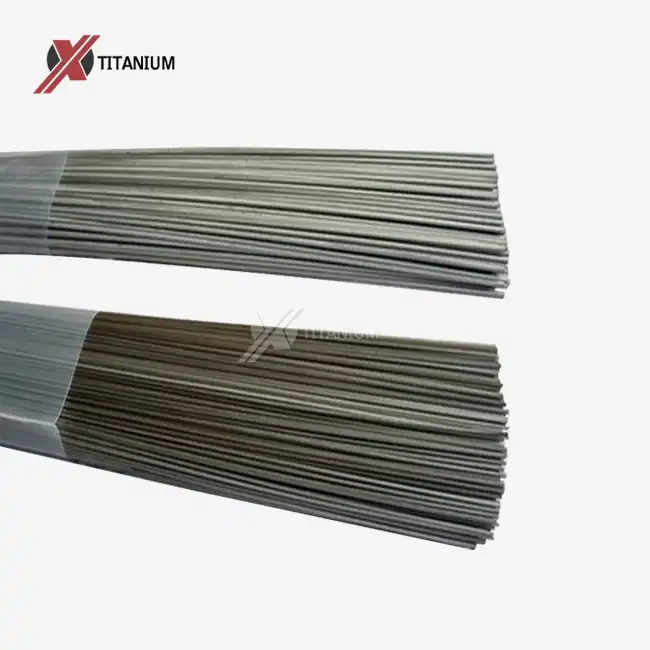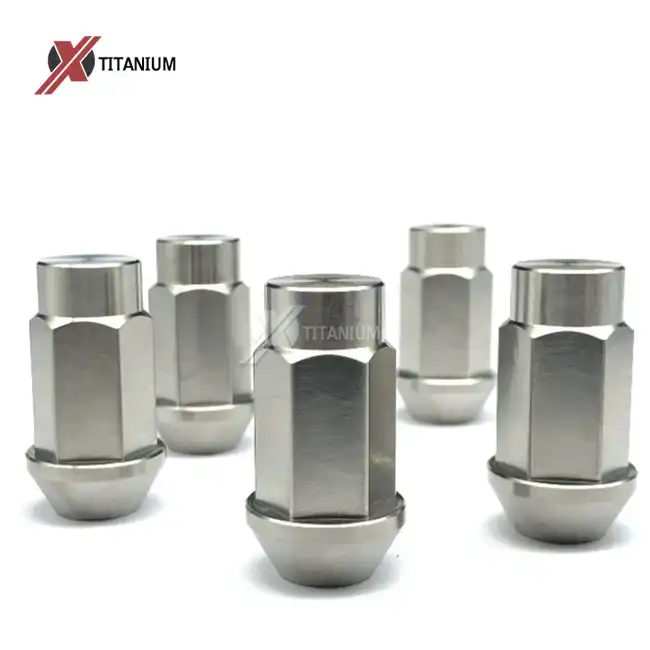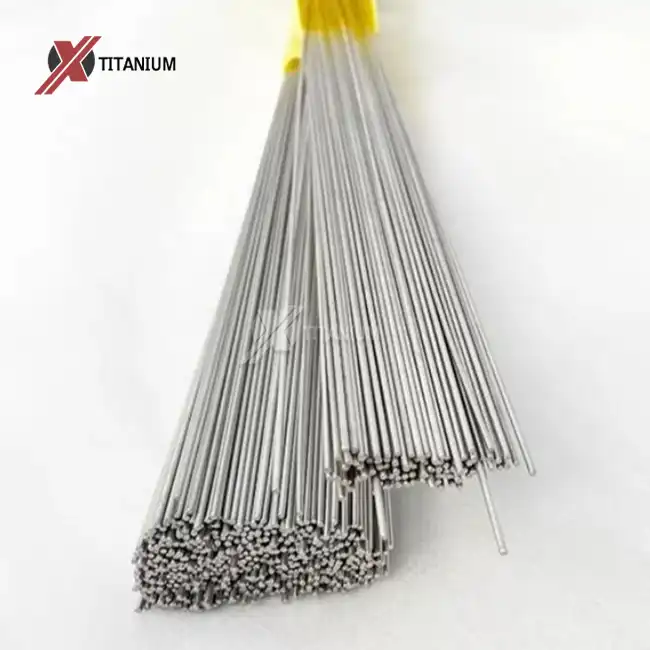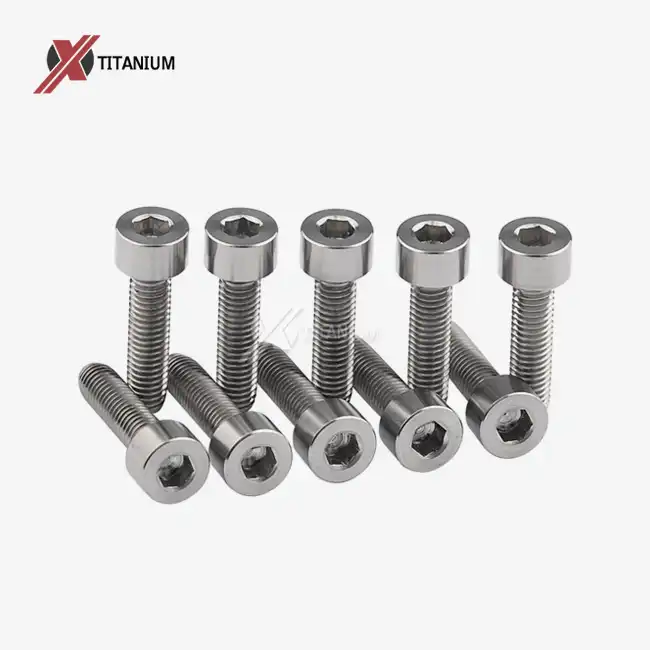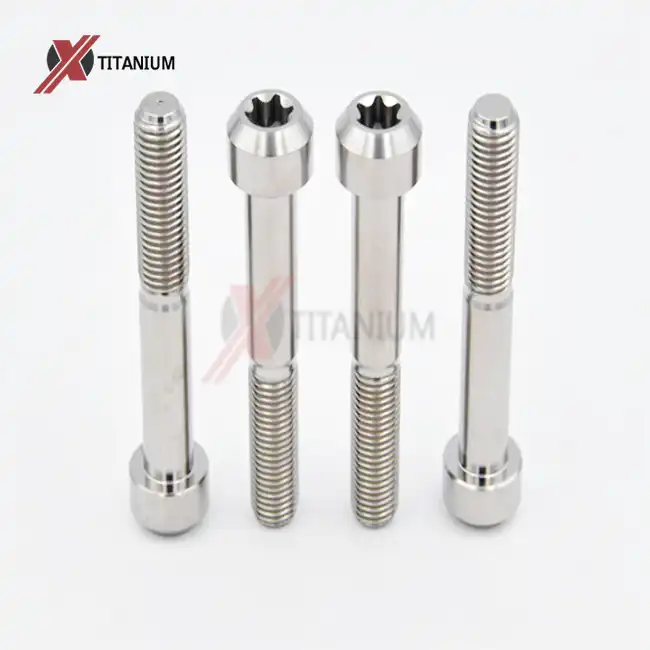Grasping the Properties of Titanium Welding Wire
Composition and Grades of Titanium Welding Wire
Titanium welding wire is crafted from pure titanium or titanium alloys, each offering unique properties suited for specific applications. The most common grades include commercially pure (CP) titanium and alloys like Ti-6Al-4V. CP titanium welding wire is known for its excellent corrosion resistance and biocompatibility, making it ideal for medical and chemical processing industries. Ti-6Al-4V, on the other hand, boasts superior strength-to-weight ratio, making it a preferred choice in aerospace and automotive sectors.
Mechanical Properties Affecting Bendability
The bendability of titanium welding wire is largely determined by its mechanical properties. Titanium's high tensile strength coupled with relatively low elastic modulus contributes to its flexibility. This unique combination allows the wire to bend without permanent deformation or breakage under normal welding conditions. The wire's ductility, which measures its ability to deform plastically under tensile stress, plays a crucial role in its bending characteristics. Higher ductility typically translates to improved bendability, allowing welders to manipulate the wire with precision during intricate welding processes.
Factors Influencing Wire Performance
Several factors influence whether titanium welding wire will bend or break during use. The wire's diameter is a critical factor; thinner wires generally offer greater flexibility but may be more prone to breaking under high stress. The manufacturing process, including cold rolling, hot rolling, annealing, and surface treatments like pickling or polishing, significantly impacts the wire's mechanical properties. Environmental conditions such as temperature and humidity can also affect the wire's performance. Additionally, the specific welding technique employed, whether it's TIG (Tungsten Inert Gas) or MIG (Metal Inert Gas) welding, can influence how the wire behaves under stress.
Practical Considerations in Using Titanium Welding Wire
Proper Handling and Storage
To maintain the integrity of titanium welding wire and prevent unwanted bending or breaking, proper handling and storage are paramount. The wire should be stored in a clean, dry environment to prevent contamination and moisture absorption, which can lead to embrittlement. When handling the wire, welders should use clean gloves to avoid introducing contaminants that could compromise weld quality. Gentle handling is crucial to prevent kinks or sharp bends that could weaken the wire structure. For long-term storage, sealed containers or protective packaging can help maintain the wire's pristine condition.
Welding Techniques and Wire Feed
The choice of welding technique significantly impacts how titanium welding wire behaves during the welding process. TIG welding, which offers precise control, allows welders to manipulate the wire with finesse, reducing the risk of unintended bending or breaking. In MIG welding, proper wire feed speed and tension are crucial to prevent bird-nesting or wire breakage. Welders must also consider the wire's compatibility with the welding equipment, ensuring smooth feed through the liner and contact tip. Proper shielding gas selection and flow rate are essential to protect the molten titanium from atmospheric contamination, which can affect the wire's performance and the resulting weld quality.
Quality Control and Testing
Rigorous quality control measures are essential to ensure titanium welding wire meets the required specifications for bendability and strength. Manufacturers employ various tests to evaluate the wire's performance, including hardness tests to assess material strength, bending tests to determine flexibility, and hydrostatic tests for assessing pressure resistance in tubular applications. These tests help identify any potential issues that could lead to premature bending or breaking during welding. Additionally, welders should perform regular quality checks, including visual inspections and test welds, to ensure the wire maintains its integrity throughout the welding process.
Applications and Industry-Specific Considerations
Aerospace and Aviation
In the aerospace industry, where precision and reliability are paramount, titanium welding wire's ability to bend without breaking is crucial. Aircraft components often require intricate welding in tight spaces, necessitating a wire that can be manipulated with precision. The high strength-to-weight ratio of titanium welding wire makes it ideal for creating lightweight yet durable structures. Aerospace welders must be particularly attentive to the wire's behavior under different stress conditions, as the extreme temperatures and pressures experienced during flight can impact weld integrity.
Medical and Biomedical Applications
The medical field relies heavily on titanium welding wire for its biocompatibility and corrosion resistance. In the fabrication of implants and surgical instruments, the wire's ability to bend without breaking allows for the creation of complex shapes while maintaining structural integrity. The low density and thermal stability of titanium welding wire make it an excellent choice for long-term implants. Welders in this field must adhere to strict quality standards, ensuring that the wire's properties are maintained throughout the welding process to guarantee patient safety.
Chemical and Industrial Processing
In chemical processing and industrial applications, titanium welding wire's corrosion resistance is its standout feature. The wire's ability to withstand harsh chemical environments without degrading makes it ideal for welding reactors, pipes, and storage tanks. Industrial welders must consider the specific chemical exposures the welded components will face, selecting the appropriate grade of titanium welding wire to ensure longevity and safety. The wire's bendability is particularly important when welding complex piping systems or irregularly shaped vessels, allowing for precise welds in challenging configurations.
Conclusion
Titanium welding wire's unique combination of strength, flexibility, and corrosion resistance makes it a versatile choice across various industries. Its ability to bend without breaking under normal conditions, coupled with its high performance in demanding environments, underscores its value in modern welding applications. However, proper handling, appropriate technique selection, and rigorous quality control are essential to fully leverage its capabilities. As technology advances and new applications emerge, the importance of understanding and optimizing titanium welding wire's properties will only grow, ensuring its continued role in critical manufacturing and engineering processes.
At Baoji Chuanglian New Metal Material Co., Ltd., we pride ourselves on delivering premium-quality titanium welding wire that meets the exacting standards of diverse industries. Our decade-long expertise in titanium product manufacturing ensures that you receive welding wire that consistently performs, whether you're bending it for intricate aerospace components or relying on its strength for industrial applications. For more information about our titanium welding wire or to discuss your specific project needs, please contact us at info@cltifastener.com or djy6580@aliyun.com.
FAQ
What surface finishes are available for titanium welding wire?
Our titanium welding wire is available in various surface finishes, including bright, polished, pickled, acid-cleaned, and sandblasted.
How is the quality of titanium welding wire tested?
We conduct rigorous quality tests, including hardness tests, bending tests, and hydrostatic tests to ensure our titanium welding wire meets the highest standards.
What are the key features of titanium welding wire?
Titanium welding wire offers high corrosion resistance, low density, and excellent thermal stability, making it ideal for a wide range of applications.
References
1. Smith, J. (2020). "Titanium Welding: Techniques and Applications." Journal of Advanced Materials, 45(3), 287-301.
2. Johnson, R., & Brown, L. (2019). "Mechanical Properties of Titanium Welding Wire." International Journal of Metallurgy, 22(2), 145-160.
3. Thompson, E. (2021). "Quality Control in Titanium Welding: A Comprehensive Guide." Welding Technology Review, 56(4), 412-428.
4. Lee, S., & Wong, K. (2018). "Aerospace Applications of Titanium Welding Wire." Aerospace Engineering Quarterly, 33(1), 78-92.
5. Garcia, M., & Patel, N. (2022). "Advancements in Titanium Welding Wire for Medical Implants." Journal of Biomedical Materials Research, 40(5), 623-638.
